|
6. Heteropterus morpheus (Pallas, 1771) /Large chequered skipper/ Hesperiidae – Hesperiinae
NL: spiegeldikkopje / D: Hüppeling, Spiegelfleck-Dickkopf, Spiegelfleck-Dickkopffalter / F: le miroir
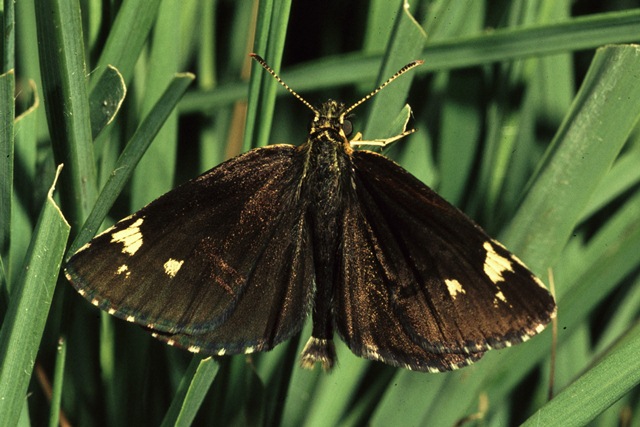 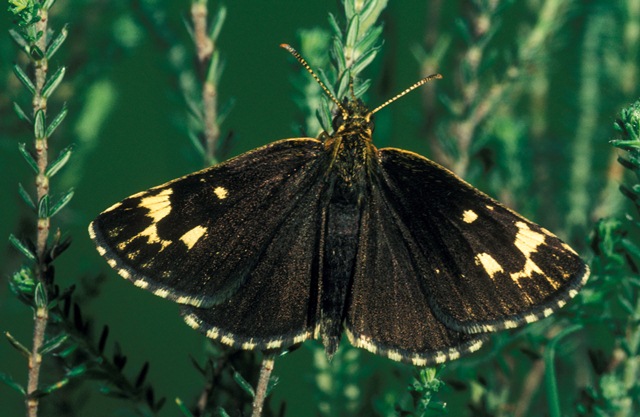 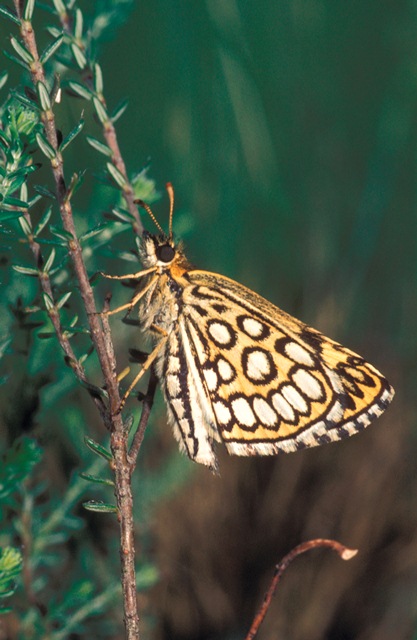
Photographs: Frits Bink ©.
Small, wing length males 17 (16-18) mm, females a little smaller. A characteristic species of swamps with purple moor-grass situated in carr and bog and also of marshes along brooks. In the Benelux it is never observed in Luxemburg and Wallonia, in the Netherlands it has disappeared from many places and is now only present in the southeastern part of province Noord-Brabant.
Adult is on the wing from end-June until early-August. The species occurs in maritime and continental climates, amplitude 6 to 17. Required heat sum is 700°d, the maximum tolerated 1800°d, the corresponding climate windows are 24 and 35 weeks.
It is a remarkable skipper because of its courtship behaviour. The male flies low over the vegetation and shows the nacreous spots, the mirrors, on the underside of the wings by closing the wings for a short time, making the flight appear to be a curious hopping, dancing motion. The function is to get the attention of the females; however, this kind of courtship works only when the insects live in a group.
The survival of a population depends mostly on the undisturbed growth of the tall grass vegetation.
Ecological characteristics
Behaviour over time
Overwintering: half grown larva in the 4th instar, 11 mm in size, in a tube which is open at the top and positioned at a height of 0.2-0.3 m (c. halfway up the tussock). Thus the larva can escape from the tube when there is a risk of inundation.
Reproduction: oviposition starts after 4-5 days when the body contains about 60 eggs. Estimated potential egg production twice as much.
Larval feeding periods: in summer 13 weeks from early-July until early-October, in spring 4-5 weeks from early-May until mid-June.
Generations: one.
Spreading of risk: not observed.
Life cycle: egg 8 (6-10) days; larva 46-49 weeks; pupa 15 (12-18) days.
Life span of adult: short, 2 weeks.
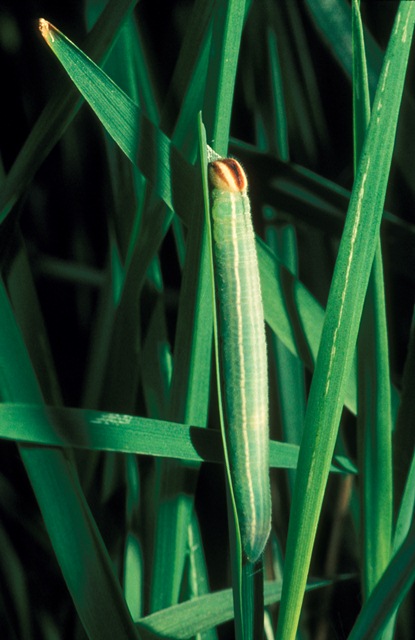 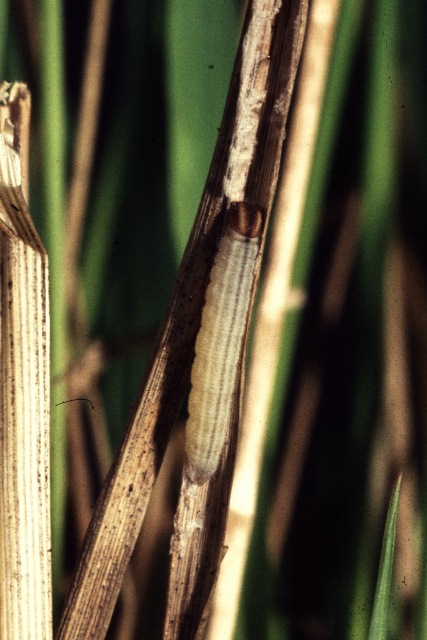
Photographs: Frits Bink ©.
Behaviour in space
From stay-at-home to migrant: stay-at-home, spatial requirement modest. Because of its courtship the species lives gregariously, however there are reports that strays have been seen up to 5 km from the locality.
Finding a mate: very remarkable, patrolling males advertise their presence in a unique way.
Orientation in the landscape: tall grass vegetation in a marsh area, in most cases purple moor-grass.
Oviposition: on the upperside of the leaf.
Defence
Threats from other organisms: the larva is protected during the time it lives in its tube, otherwise both larvae and adults are at risk from avian predators.
Threats from the environment: the butterfly is very intolerant of heat and drought.
Feeding habits
Adult: nectar of flowers, often purple loosestrife.
Larva: feed on the upper part of the leaf above its tube.
Larval foodplants
Plant species: Poaceae, tall grasses mainly Calamagrostis canescens, Molinia caerulea.
Journal
Rearing experiments based on specimen from Kergroix, Brittany, France
Report
27 July 1981: one female captured.
5-7 August: eggs hatch, larva immediately folded the leaf by spinning the edges together, but do not feed.
18 October: larvae now in diapause inside their tubes, green in colour and 11 mm in length. Larvae are protected from becoming submerged by their short hairs maintaining an air layer around their bodies.
15 November: larvae becoming brown in colour, move up and down in their tube and when disturbed their head appears at the open end.
Overwintering outdoors.
21 March 1982: one batch of larvae taken indoors.
27 March: tubes collected, larvae look around but do not come out of their tubes.
4 April: a larva basks on a leaf but does not eat. Molinia has sprouted to a length of 25 cm.
10 April: at least two larvae feeding and make a new tube.
18 April: all larvae feeding, not using their tubes but sitting in bright daylight on the leaves.
6 May: most larvae now full grown, size 30 mm and catapulting their faeces 20 to 30 cm away.
9 May: biggest larva 33 mm in length.
10 May: first pupa seen.
16 May: eight pupae present.
22 May: first adult appeared.
26 May: two adults hatched and died the same day because of the heat (temperature up to 35°C). Egg load: fresh females have only 5-6 eggs ready to lay in the body, when four days old 60 chorionated eggs were present.
6 June: last pupa hatched.
Batch of larvae which remained outside:
22 May: larvae nearly full grown, feed selectively on Molina out of a selection of grasses provided.
Table 6-1. Results of dissections

Table 6-2. Collection and observation localities
D, Usedom, Thurbruch 53° 55’ 26”N – 14° 07’ 52”E; 10 July 1968.
D, Flögeln 53° 40’ 47”N – 8° 48’ 37”E; 15 July 2005.
EST, Kuresoo 58° 28’ 00”N – 25° 11’ 59”E; 8 July 1999.
F, Brittany, Kergroix 47° 38’ 54”N – 3° 02’ 03”W; 27 July 1981.
NL, Empense en Tondense heide 52° 08’ 20”N – 6° 04’ 55”E; 29 July 1980.
NL, Empense en Tondense heide 52° 08’ 20”N – 6° 05’ 07”E; 24 July 1985.
Fig. 6-1.Heteropterus morpheus, phenogram adapted from Bos et al. 2006: 81.
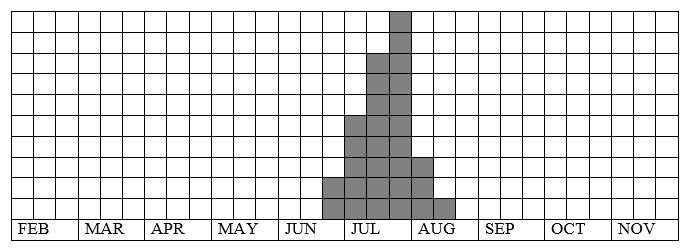
Fig. 6-2. Heteropterus morpheus, habitat characteristics.
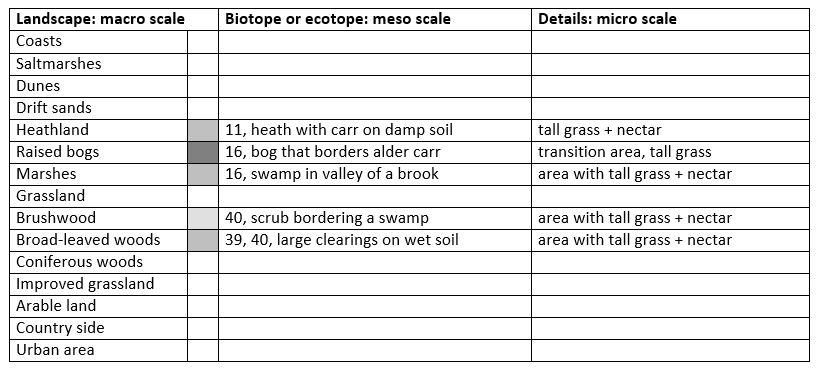
Fig. 6-3. Heteropterus morpheus, climate matrix, heat-sums 700 - 1800°d.
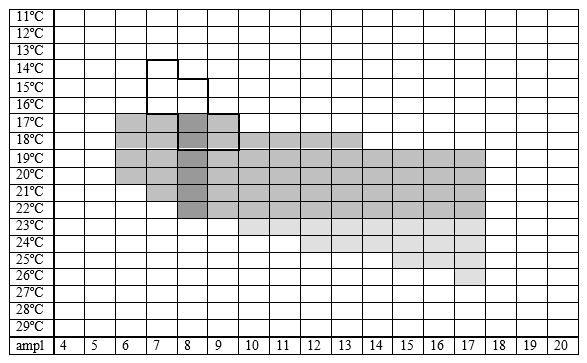
|










